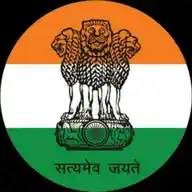
UPSC Economy UPSC UPSC UPSC UPSC UPSC UPSC UPSC UPSC UPSC UPSC UPSC UPSC UPSC UPSC UPSC UPSC UPSC™
January 21, 2025 at 05:19 AM
🔆The article analyzes the latest inflation data in India and discusses the challenges faced by the Reserve Bank of India (RBI) in formulating monetary policy.
Key Points:
✅Inflation Trends: Inflation eased to 5.72% in December 2023, but still remains above the RBI's target of 4%. Food inflation, while moderating, continues to be a concern, with some items like edible oils and eggs witnessing a rise in prices.
✅RBI's Dilemma: The RBI faces a dilemma between stimulating growth by cutting interest rates and maintaining price stability. While food inflation has eased, other factors like rising import costs and a weakening rupee pose challenges.
✅Role of Government Policy: The article emphasizes the need for government measures to address food price pressures, such as improving supply chains and managing market volatility. Fiscal prudence and a clear glide path for fiscal consolidation are also crucial for supporting the RBI's monetary policy.
✅Looking Ahead: The RBI is likely to maintain a cautious stance on interest rate cuts until inflation is sustainably brought down to the target level. The government's budget and the evolving global economic scenario will also play a crucial role in determining the RBI's future policy decisions.
✅Possible UPSC Prelims Question:
What is the current target inflation rate set by the Reserve Bank of India (RBI)?
A. 4%
B. 5%
C. 6%
D. 7%
✅Possible UPSC Mains Question:
Discuss the challenges faced by the Reserve Bank of India in managing inflation in the current economic context. Analyze the role of monetary policy and fiscal policy in controlling inflation and promoting sustainable economic growth in India.
#economy